 Last additions - Omi-Hachiman 近江八幡市 Last additions - Omi-Hachiman 近江八幡市 |
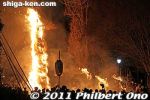
Now we see a large torch on fire. I noticed the flying embers falling on Taneya, but no problem.Apr 16, 2011
|
|
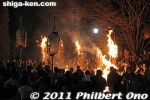
It seems that they gathered all the smaller torches (which they dragged around) here.Apr 16, 2011
|
|
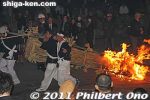
Apr 16, 2011
|
|
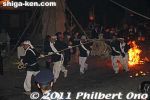
Apr 16, 2011
|
|
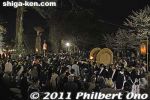
Apr 16, 2011
|
|
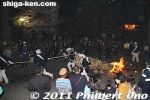
Apr 16, 2011
|
|
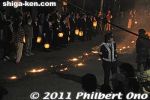
The torches leave a trail of fire.Apr 16, 2011
|
|
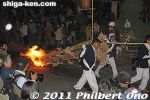
Then they had smaller torches being dragged around by small groups of men and boys.Apr 16, 2011
|
|
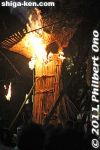
Some time after 8 pm, they finally lit the first torch.Apr 16, 2011
|
|
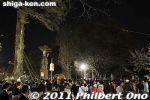
At 8 pm, there's supposed to be fireworks, but due to the East Japan earthquake/tsunami, the fireworks were cancelled this year in 2011.Apr 16, 2011
|
|
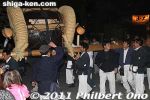
Apr 16, 2011
|
|
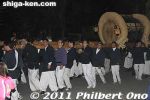
Apr 16, 2011
|
|
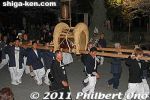
Apr 16, 2011
|
|
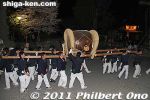
Apr 16, 2011
|
|
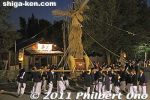
Apr 16, 2011
|
|
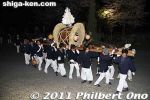
Apr 16, 2011
|
|
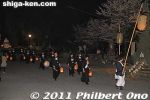
Apr 16, 2011
|
|
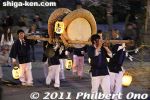
A few taiko processions arrive and marched around.Apr 16, 2011
|
|
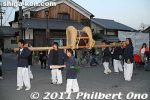
At around 7 pm, people with taiko drums start to arrive.Apr 16, 2011
|
|
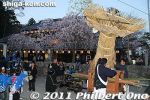
This is in front of Taneya. Apr 16, 2011
|
|
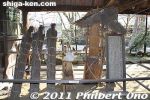
Smaller torches.Apr 16, 2011
|
|
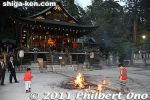
Another tradition is to have children drag a miniature torch around a fire. In the old days, many children would be running around this fire.Apr 16, 2011
|
|
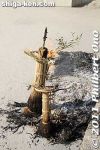
Burning miniature torches at Himure Hachimangu Shrine.Apr 16, 2011
|
|
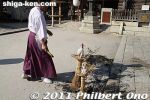
In the afternoon of the 14th, people who made miniature torches can come to Himure Hachimangu Shrine and burn them.Apr 16, 2011
|
|
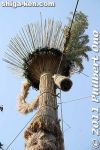
Apr 16, 2011
|
|
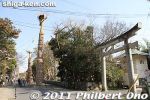
Apr 16, 2011
|
|
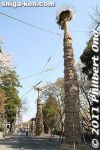
All this to pray for an abundant harvest.Apr 16, 2011
|
|
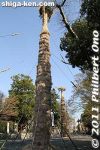
Apr 16, 2011
|
|
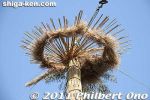
Apr 16, 2011
|
|
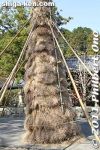
Apr 16, 2011
|
|
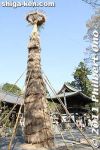
Apr 16, 2011
|
|
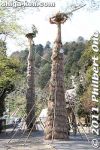
Two tall ones in front of Himure Hachimangu Shrine.Apr 16, 2011
|
|
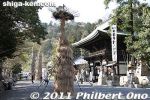
Torches near Himure Hachimangu Shrine's Romon Gate. This is also one location where the film Idai Naru, Shurararabon (偉大なる、しゅららぼん The Great Shu Ra Ra Boom) was filmed. The ceremony for baby Ryosuke.Apr 16, 2011
|
|
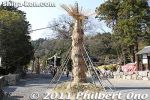
More torches in front of Himure Hachimangu Shrine. This is also where they hold the Sagicho Matsuri in March. MAPApr 16, 2011
|
|
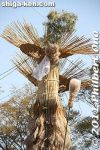
Apr 16, 2011
|
|
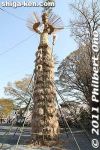
The torches are propped up with bamboo poles and ropes.Apr 16, 2011
|
|
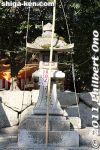
Keep away from the stone lanterns.Apr 16, 2011
|
|
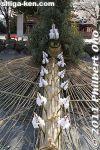
Apr 16, 2011
|
|
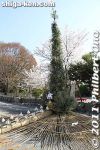
These green torch will also burn. There are two of these green ones, one is male and other is female.Apr 16, 2011
|
|
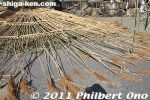
Apr 16, 2011
|
|
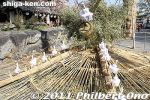
Very artistic and aesthetic.Apr 16, 2011
|
|
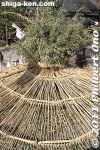
Apr 16, 2011
|
|
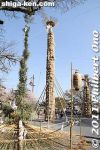
Apr 16, 2011
|
|
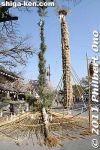
There are torches for the villages which partake in this festival. This is in front of Taneya, a local confection shop.Apr 16, 2011
|
|

A long bamboo pole stiffens the torches which really look like sculpture. The festival is held on April 14-15. On the 14th, they burn these giant torches one by one from 8 pm.Apr 16, 2011
|
|
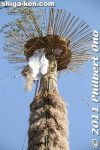
Torch top look similar, but they are different. Apr 16, 2011
|
|
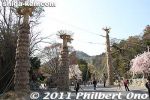
Hachiman Matsuri in Omi-Hachiman is Shiga Prefecture's biggest fire festival. Impressive even without the fire. Just look at these giant torches made of rice straw. There are more in front of Himure Hachimangu Shrine.Apr 16, 2011
|
|
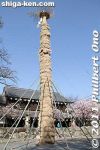
The giant torches can be as high as 10 meters. They are made on the Sunday before April 14-15 when the festival is held. So these torches have been here since Sunday. In front of Taneya.Apr 16, 2011
|
|
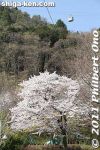
Hachiman Park is at the foot of Mt. Hachiman-yama.Apr 16, 2011
|
|
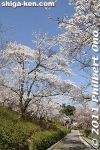
Apr 16, 2011
|
|
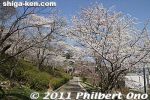
Hachiman Park cherry blossoms.Apr 16, 2011
|
|
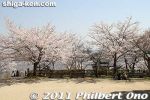
Apr 16, 2011
|
|
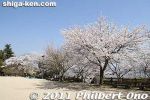
Apr 16, 2011
|
|
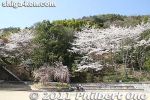
Apr 16, 2011
|
|
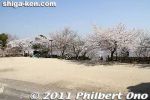
Apr 16, 2011
|
|
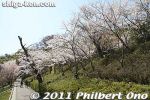
Apr 16, 2011
|
|
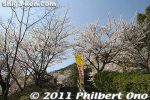
Apr 16, 2011
|
|
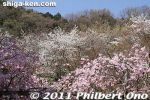
Apr 16, 2011
|
|
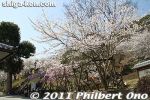
Apr 16, 2011
|
|
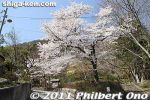
Another sakura spot is Hachiman Park next to Omi-Hachiman Pubic Library on the west end of the moat. 八幡公園Apr 16, 2011
|
|
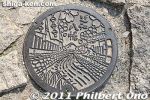
Omi-Hachiman's manhole depicts Hachiman-bori moat adorned with cherry blossoms. Shiga Prefecture.Apr 16, 2011
|
|
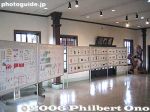
2nd floor exhibition space of Haku'unkan. Apr 16, 2011
|
|
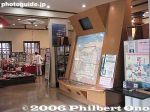
Inside 1st floor of Haku'unkan. The building was beautifully restored in 1994.Apr 16, 2011
|
|

Formerly a primary school built in 1877, Haku'unkan is now a tourist info office, souvenir shop, and exhibition space (2nd floor). 白雲館Apr 16, 2011
|
|
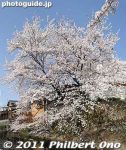
Apr 16, 2011
|
|
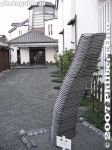
Outdoor sculpture at Kawara Roof Tile Museum, Omi-Hachiman, ShigaApr 16, 2011
|
|
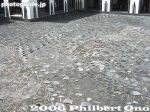
Kawara Roof Tile Museum's ground is covered with roof tiles, looking like cobblestones.Apr 16, 2011
|
|
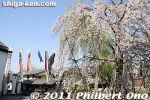
Kawara Roof Tile Museum's koinobori carp streamers and weeping cherry tree.Apr 16, 2011
|
|
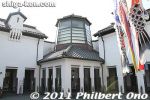
Kawara Roof Tile MuseumApr 16, 2011
|
|
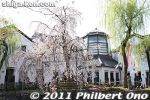
Kawara Roof Tile Museum in spring.Apr 16, 2011
|
|
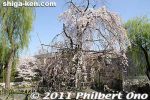
Kawara Roof Tile Museum's weeping cherry tree.Apr 16, 2011
|
|
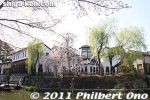
Kawara Roof Tile MuseumApr 16, 2011
|
|
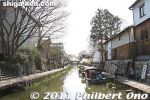
Near the Kawara Roof Tile Museum is this dock where you board the moat boat. Fare is 1,000 yen for adults.Apr 16, 2011
|
|
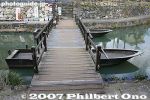
Apr 16, 2011
|
|
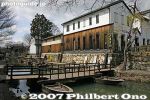
Unique, but controversial, bridge supported by two boats underneath.Apr 16, 2011
|
|
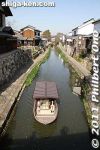
Apr 16, 2011
|
|
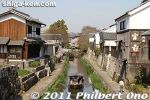
Apr 16, 2011
|
|
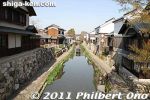
Beyond Hakuunbashi Bridge, the moat goes to Kawara Roof Tile Museum and the moat boat dock. The cherry trees also stop, but there a few more on the far end of the most.Apr 16, 2011
|
|
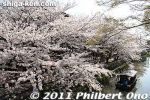
View from Hakuunbashi Bridge. 白雲橋Apr 16, 2011
|
|
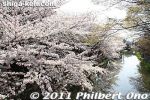
View from Hakuunbashi Bridge. 白雲橋Apr 16, 2011
|
|
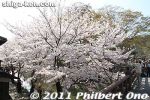
Apr 16, 2011
|
|
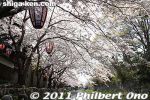
Apr 16, 2011
|
|
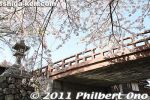
Hakuunbashi Bridge and stone lantern. 白雲橋Apr 16, 2011
|
|
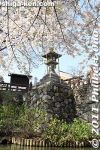
Apr 16, 2011
|
|
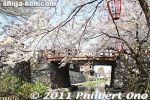
Being the heart of Hachiman-bori, Hakuunbashi Bridge is where the sakura is concentrated the most. 白雲橋Apr 16, 2011
|
|
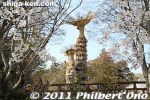
Near Hakuunbashi Bridge, you can see two of the giant torches to be lit for the Hachiman Matsuri fire festval later in the evening.Apr 16, 2011
|
|
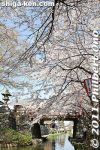
Apr 16, 2011
|
|
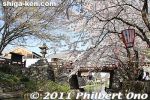
This bridge leads to Himure Hachimangu Shrine (to the left). This is the heart of Hachiman-bori moat.Apr 16, 2011
|
|
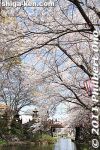
Apr 16, 2011
|
|
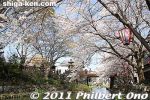
Apr 16, 2011
|
|
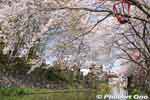
Apr 16, 2011
|
|
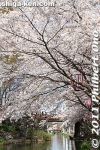
Hachiman-bori's highest concentration of cherry blossoms is near Hakuunbashi Bridge.Apr 16, 2011
|
|
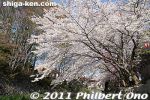
Apr 16, 2011
|
|
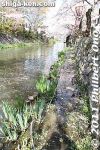
You can easily walk along the entire moat except for this section which is a little flooded. My waterproof shoes came in handy.Apr 16, 2011
|
|
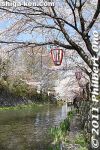
Apr 16, 2011
|
|
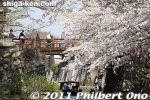
Apr 16, 2011
|
|
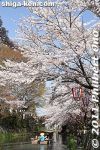
Apr 16, 2011
|
|
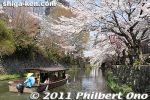
Apr 16, 2011
|
|
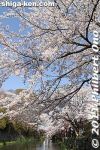
Apr 16, 2011
|
|
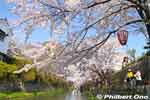
Apr 16, 2011
|
|
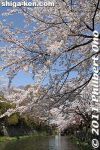
Apr 16, 2011
|
|
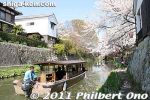
Apr 16, 2011
|
|
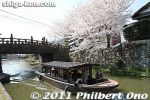
Yakata-bune tourist boat cruising through Hachiman-bori moat in Omi-Hachiman.Apr 16, 2011
|
|
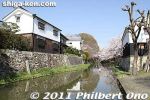
Apr 16, 2011
|
|
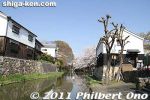
Apr 16, 2011
|
|
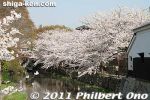
Apr 16, 2011
|
|
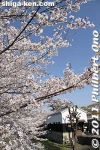
Apr 16, 2011
|
|
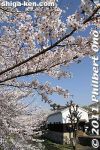
Apr 16, 2011
|
|
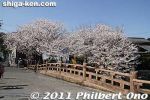
Bridge in Osugi-cho. 大杉町Apr 16, 2011
|
|
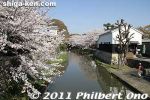
Apr 16, 2011
|
|
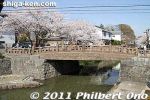
Apr 16, 2011
|
|
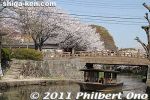
Apr 16, 2011
|
|
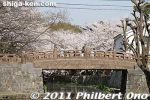
A few bridges also cross the moat. This is Meijibashi Bridge. 明治橋Apr 16, 2011
|
|
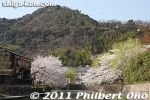
Mt. Hachiman-yama is in the background. An aerial tramway goes up the mountain which was the site of Hachiman Castle.Apr 16, 2011
|
|
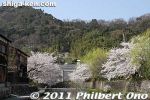
Apr 16, 2011
|
|
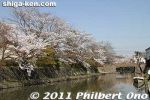
Apr 16, 2011
|
|
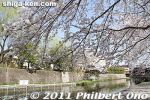
Apr 16, 2011
|
|
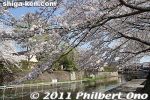
Apr 16, 2011
|
|
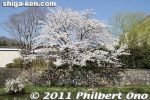
Apr 16, 2011
|
|
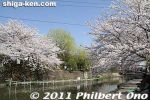
Apr 16, 2011
|
|
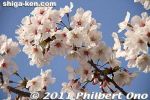
Apr 16, 2011
|
|
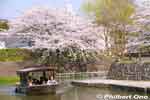
Apr 16, 2011
|
|
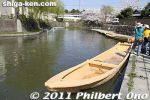
Apr 16, 2011
|
|
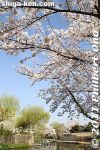
Apr 16, 2011
|
|
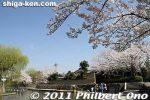
Apr 16, 2011
|
|
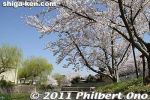
Perfect day to shoot cherry blossoms.Apr 16, 2011
|
|
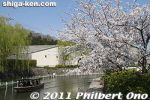
I was in Omi-Hachiman to see the Hachiman Matsuri fire festival on April 14. I was lucky to find the cherries in full bloom at Hachiman-bori moat on a sunny day.Apr 16, 2011
|
|
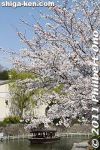
Also during sakura season, the yakata-bune boats offer moat rides for 1,000 yen for adults. Boats leave from near The Kawara Roof Tile Museum on the east end of the moat.Apr 16, 2011
|
|
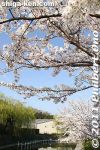
The cherry trees start from near the Omi-Hachiman Public Library. They continue all the way to the main torii of Himure Hachimangu Shrine.Apr 16, 2011
|
|
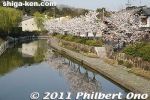
If the cherry blossoms are in bloom, I recommend walking along the canal from the west end since the sun will be on your back and on the flowers.Apr 16, 2011
|
|
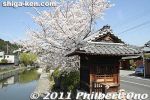
Hachiman-bori is also part of the National Important Traditional Townscape Preservation District (重要伝統的建造物群保存地区).Apr 16, 2011
|
|
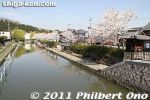
Hachiman-bori is quite long and it even connects to Lake Biwa. The main part of moat is about 1 km long. I started walking here on the west end near the Omi-Hachiman Public Library. MAPApr 16, 2011
|
|
|
|

Toyosato Elementary School was renovated and reopened in May 2009.Oct 28, 2009
|
|

Designed by William Merrell Vories, the old Toyosato Elementary School building was built in 1937. MAPOct 28, 2009
|
|

This rabbit sculpture and turtle sculpture represents the famous Aesop's fable, the race between the turtle and hare.Oct 28, 2009
|
|

Inside former Minakuchi Public Library. Now it is sometimes used as an art gallery.Oct 28, 2009
|
|

Staircase inside former Minakuchi Public Library.Oct 28, 2009
|
|

Entrance to the former Minakuchi Public Library has Romanesque columns.Oct 28, 2009
|
|

Former Minakuchi Public Library designed by William Vories and built in 1928. It is next to Minakuchi Elementary School in Koka. 旧水口図書館 MAPOct 28, 2009
|
|
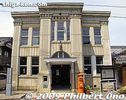
Samegai Museum in a former post office designed by William Merrell Vories, in Samegai, Maibara, Shiga Pref. MAPOct 28, 2009
|
|

Minakuchi Christian ChurchOct 28, 2009
|
|

Minakuchi Christian Church designed by Vories and built in Nov. 1930. In Koka, Shiga. MAPOct 28, 2009
|
|

Inside the former Samegai post office designed by William Merrell Vories.Oct 28, 2009
|
|

Inside the former bank building in Imazu. A nice place to rest. Exhibition panels explain about Vories.Oct 28, 2009
|
|

One panel shows the location of buildings in Shiga designed by Vories. The blue dots indicate buildings which no longer exist, while the red dots indicate buildings which still exist.Oct 28, 2009
|
|

Imazu Vories Museum in Imazu, Takashima, a former bank building designed by William Merrell Vories. Now a coffee shop and exhibition space. MAPOct 28, 2009
|
|
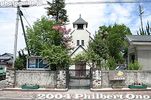
Imazu Church, designed by William Merrell Vories. This is next to the former bank building. MAPOct 28, 2009
|
|

The company sells a large variety of skin-care products.Oct 27, 2009
|
|

Common chapstick.Oct 27, 2009
|
|

Monument commemorating the sister city relationship between Omi-Hachiman and Leavenworth, Kansas, birthplace of Vories. This is next to the statue of Vories and a student offering him flowers.Oct 27, 2009
|
|

The lobby of the OMI Corp. displayed their early products and current products. Their main product was Menturm. I asked if they still had the original product that the company first made. They didn't.Oct 27, 2009
|
|

This local municipal museum was originally the Hachiman Police Department built in 1886. In 1953, it was renovated by Vories and continued to house the Omi-Hachiman Police Department. In 1974, it was converted to the museum it is today. 近江八幡市立Oct 27, 2009
|
|

The arrow points the way to the next Vories building in Omi-Hachiman.Oct 27, 2009
|
|

My last stop was OMI Corp. which started out in 1920 as the Omi Sales Company.(株)近江兄弟社 MAPOct 27, 2009
|
|
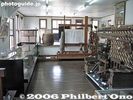
Inside the municipal museum.Oct 27, 2009
|
|
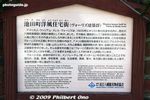
About Ikeda-cho in English and Japanese.Oct 27, 2009
|
|

Former Omi Mission Double House designed by William Merrell Vories. Today, two families still live in the house. Not open to the public. 旧近江ミッション・ダブルハウスOct 27, 2009
|
|

This third house in Ikeda-cho is the former Omi Mission Double House that was used to house the Omi Mission's American staff. 旧近江ミッション・ダブルハウスOct 27, 2009
|
|

Former Omi Mission Double House was built in 1920 and large enough for two families. Vories' parents from the US and an American architect were the first occupants. Oct 27, 2009
|
|

Owned by Omi Brotherhood Co., the Waterhouse house remained closed to the public until March 2023 when it was converted into a lodging facility. Up to seven people in the same family or group can lodge in this three-story Vories house. The 1st floor has the kitchen, living and dining rooms and toilet. The 2nd floor has three bedrooms, meeting room, and bath/toilet. (The 3rd floor is closed.) Lots of windows make it bright and warm. Wi-fi, towels, toiletries, TV, and kitchen appliances provided.
At ¥132,000 per night to rent the entire house for up to 7 people, it's not cheap. Make reservations with the official website's contact form (in Japanese): https://waterhouse-kinenkan.com/Oct 27, 2009
|
|

The neighboring house, the Waterhouse Memorial House, was built in 1913 for Paul B. Waterhouse, who was an English instructor at Waseda University before becoming a missionary with the Omi Mission. Designed by William Merrell Vories. ウォーターハウWaterhouse and his wife Bessie lived here for six years. He was also a yachtsman and used a boat on Lake Biwa to visit lakeside villages for missionary work. After he returned to the States, the house was used for Omi Mission cooking classes and later as a girls' school in Omi Brotherhood.Oct 27, 2009
|
|

Built in 1913, this Yoshida Residence was designed by William Merrell Vories for Yoshida Etsuzo who was a former student and partner of Vories for the Omi Mission. This house is still occupied and not open to the public. 吉田邸Oct 27, 2009
|
|

Next was this neighborhood called Ikeda-cho with three Vories-designed homes along this street. MAPOct 27, 2009
|
|
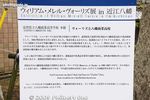
Vories still felt greatly indebted to the school, nicknamed "Hassho."Oct 27, 2009
|
|
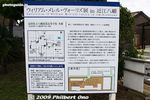
Oct 27, 2009
|
|

Hachiman Commercial High School was where Vories taught English when he arrived in 1905. However, he was dismissed after two years due to his Bible study group seen as a disturbance. By hiring Vories as the architect, the school made peace with Vories.Oct 27, 2009
|
|

Hachiman Commercial High School designed by William Merrell Vories in 1935. 八幡商業高等学校 MAPOct 27, 2009
|
|

Hachiman Church Pastor House is not open to the public.Oct 27, 2009
|
|

Hachiman Church Pastor HouseOct 27, 2009
|
|

Next to the Andrews Memorial Hall is the Hachiman Church built in 1983. The original church, which was lost in a fire, was designed by William Merrell Vories in 1924. 八幡教会Oct 27, 2009
|
|

Hachiman Church Pastor House, designed by William Merrell Vories. It is right across the church. 八幡教会牧師館(旧地塩寮) MAPOct 27, 2009
|
|

The building is now used to care for the elderly and handicapped and for missionary activities. There is also a meeting room for rent. It is next to a church.Oct 27, 2009
|
|

Side view. This building served as the Hachiman YMCA until 1987. It was left unused and dilapidated for 20 years until Omi Brotherhood Co. renovated it in 2007 to mark the building's 100th anniversary.Oct 27, 2009
|
|
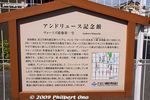
About the Andrews Memorial Hall. Web site: http://www.vories.or.jp/fukushi_no_sato/andrews.htmlOct 27, 2009
|
|

Back view of the former Hachiman YMCA, the first building designed by William Merrell Vories in 1907. Inside is quite modern, except for one room. MAPOct 27, 2009
|
|

The current Andrews Memorial Hall building was reconstructed and moved 12 meters from the original location in 1935. Thus it is not the original building, but very similar.Oct 27, 2009
|
|

Next was the Andrews Memorial Hall, the first building designed by William Merrell Vories. It was formerly the Hachiman YMCA. アンドリュース記念館(旧八幡YMCA会館)Oct 27, 2009
|
|

Built in 1933, the Matsuoka Residence was designed by William Merrell Vories. This house was not open to the public.Oct 27, 2009
|
|

Oct 27, 2009
|
|
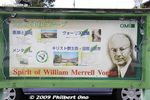
The Omi Brotherhood Corporate Group is involved in education, medicine and welfare, architectural design, and health-care products.Oct 27, 2009
|
|
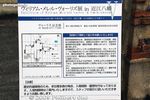
Map of the tour route.Oct 27, 2009
|
|

Matsuoka Residence. 村岡邸Oct 27, 2009
|
|
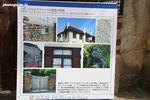
The Vories residence has three chimneys. Web site: http://vories.com/Oct 27, 2009
|
|
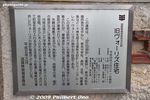
About the former Vories residence. It is owned by the Omi Brotherhood Co. The house was originally built in 1931 as a dormitory for teachers at the kindergarten, but it was turned into a residence instead. A Japanese-style room was also added.Oct 27, 2009
|
|

Name plate at the front gate of the Vories residence, called the Hitotsuyanagi Memorial House. It is designated as a Tangible Cultural Property of Shiga. MAPOct 27, 2009
|
|

Although this was Vories' residence, he did not own the house. He did not believe in having private assets. We could see the large living room full of pictures, books, etc., and the Japanese-style room for Makiko. ヴォーリズ記念館(旧ヴォOct 27, 2009
|
|

Near the school is this residence where Vories and his wife Makiko lived during the latter half of their lives. The house is normally not open to the public. Sometimes you can see inside the house if you make an appointment. ヴォーリズ記念館Oct 27, 2009
|
|

Vories Memorial Chapel on the 5th floor of the Omi Brotherhood Schools main building. ヴォーリズ平和礼拝堂Oct 27, 2009
|
|

We were also allowed to see the chapel in the school's main building here. The chapel was on the 5th floor. This building was completed in March 2007. 学園本館Oct 27, 2009
|
|

Display of posters of past Vories exhibitions.Oct 27, 2009
|
|

Omi Kyodaisha Gakuen is also one location where the film Idai Naru, Shurararabon (偉大なる、しゅららぼん The Great Shu Ra Ra Boom) was filmed.Oct 27, 2009
|
|

Kyoiku-kan is attached to the Hyde Building. 教育会館Oct 27, 2009
|
|

Education Building called Kyoiku Kaikan. 教育会館Oct 27, 2009
|
|

Entrance to Hyde Memorail Building.Oct 27, 2009
|
|

Other side and entrance to the Hyde Memorail Building. Inside were panel exhibitions related to Vories' medical and educational activities.Oct 27, 2009
|
|

Hyde Memorial Building.Oct 27, 2009
|
|

Vories acquired the rights to sell Mentholatum products in 1920, and his Omi Sales Company sold the product in Japan as, "Menturm." It was a good source of income to finance his activities.Oct 27, 2009
|
|

Oct 27, 2009
|
|

Statue of Vories.Oct 27, 2009
|
|

The Hyde Memorial Building was built in 1931 to serve as Seiyuen Kindergarten run by Hitotsuyanagi Makiko, Vories' wife from 1919. MAPOct 27, 2009
|
|

The construction of the kindergarten building was financed by the wife of Albert Alexander Hyde, the founder of The Mentholatum Company. This building was thus named after Hyde. Oct 27, 2009
|
|

On the right is the Hyde Memorial Building designed by William Merrell Vories. 近江兄弟社学園ハイド記念館(旧淸友園幼稚園)Oct 27, 2009
|
|

Oct 27, 2009
|
|
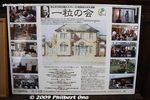
An NPO called Hitotsubu no Kai (一粒の会) has an office inside and they work to renovate the building.Oct 27, 2009
|
|

Next was Shuyukan, a former sake warehouse (not Vories-designed) now serving as an exhibition space and restaurant. The exhibition featured photos of Vories buildings in the summer resort of Karuizawa, Nagano Pref. 酒游舘Oct 27, 2009
|
|

The largest Vories building on this tour was the Hyde Memorial Building at this school called the Omi Kyodaisha Gakuen (Omi Brotherhood Schools). 近江兄弟社学園ハイド記念館(旧淸友園幼稚園).Oct 27, 2009
|
|

The former post office had a crystal glass doorknob on the postmaster office's door.Oct 27, 2009
|
|

Unfortunately, photography was not allowed inside any of the buildings, which is puzzling since photography is allowed in other Vories buildings open to the public in Shiga.Oct 27, 2009
|
|
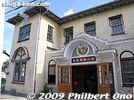
We could also see the 2nd floor which had a panel exhibition of Vories buildings.Oct 27, 2009
|
|

A short walk from Hakuunkan was the first Vories building on the map, the former Hachiman Post Office. 旧八幡郵便局舎Oct 27, 2009
|
|
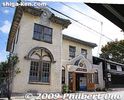
Former Hachiman Post Office in Omi-Hachiman, designed by William Merrell Vories. Built in 1921 and served as a post office until 1960. MAPOct 27, 2009
|
|

Hakuunkan's 1st floor had a registration desk for exhibition visitors. Pay 1,000 yen and you receive tickets to enter a few Vories buildings and a map. The 2nd floor had a panel exhibition introducing Vories.Oct 27, 2009
|
|

Poster for the Exhibition of William Merrell Vories in Omi-Hachiman. The map showed a walking route to see all the Vories buildings.Oct 27, 2009
|
|

During Oct. 3 to Nov. 3, 2009 in Omi-Hachiman, they held an exhibition of Vories buildings. For 1,000 yen, we were able to enter a few of the buildings normally closed to the public. MAPThe starting point was this Hakuunkan Hall (not Vories-designed).Oct 27, 2009
|
|

William Merrell Vories is one of the most famous historical figures in Shiga. His legacy remains in physical form in many places through former bank buildings, post office branches, schools, and Christian churches. MAPOct 27, 2009
|
|

Poster for the movie "Katen no Shiro" (火天の城) released in Japan on Sept. 12, 2009. It is about the building of Azuchi Castle. Movie review hereSep 15, 2009
|
|

Jul 14, 2009
|
|

A potpourri of firecrackers, twirling lights, and everything else lit up and blew up like pandemonium.Jul 14, 2009
|
|

Jul 14, 2009
|
|

Later, young men carried this huge column made of straw looking like a torch. Are they gonna light this too?? Jul 14, 2009
|
|

Unfortuntaely, the smoke blew in front of the design so we could hardly see it.Jul 14, 2009
|
|

Jul 14, 2009
|
|

Jul 14, 2009
|
|

Next, they had some great fireworks in the sky and everybody watched.Jul 14, 2009
|
|

The smaller panel which burst into colorful fireworks to form a picture.Jul 14, 2009
|
|

First we heard taiko drum beating and they entered the shrine at around 8:30 pm.Jul 14, 2009
|
|

Jul 14, 2009
|
|

Finally at 9:50 pm, they shot a small rocket to the big panel which then exploded loud enough to knock your pants off.Jul 14, 2009
|
|

Boom!Jul 14, 2009
|
|

Shinoda Shrine address: 滋賀県近江八幡市上田町1613Jul 14, 2009
|
|

The huge explosion was followed by loud whistles and smaller pops and crackles.Jul 14, 2009
|
|

Shinoda FireworksJul 14, 2009
|
|

Meanwhile, they had a good number of fireworks-shooting torches.Jul 14, 2009
|
|

At 9:45 pm, they lit a smaller panel which burst into colorful fireworks to form a picture. They used this small rocket mounted on a wire speeding to the panel. The little thing lit up the panel.Jul 14, 2009
|
|

Jul 14, 2009
|
|

Jul 14, 2009
|
|

Next was Niagara Falls.Jul 14, 2009
|
|

Niagara Falls, a crowd pleaser.Jul 14, 2009
|
|

Jul 14, 2009
|
|

They erected the straw column next to the one that was already standing.Jul 14, 2009
|
|

Finally, things calmed down after about a minute and this picture appeared.Jul 14, 2009
|
|

This is the glowing picture on the huge wooden panel. I then had to rush back to the train station to catch the last train home.Jul 14, 2009
|
|

Even the moon on the upper left.Jul 14, 2009
|
|

Shinoda Fireworks climaxed with an incredible spectacle of sight and sound. The ancient Japanese sure knew how to make and show fireworks.Jul 14, 2009
|
|

If you think it looks pretty plain and unimpressive, you'll be in for a big surprise later in the evening. MAPJul 14, 2009
|
|

People sit to reserve a good spot for viewing the fireworks.Jul 14, 2009
|
|

On the grounds of Shinoda Jinja Shrine is this large wooden panel with a large design. It is about 15 meters high and 20 meters wide. Held annually on May 4 at Shinoda Shrine, the Shinoda Hanabi display is a surprisingly spectacular fireworks display.Jul 14, 2009
|
|

This is actually an ancient form of Japanese fireworks called wabi 和火(わび).Jul 14, 2009
|
|

Then a torch touches a few places to set it afire.Jul 14, 2009
|
|

But it is soon repaired to see another fight.Jul 14, 2009
|
|
|
| 1087 files on 5 page(s) |
2 |  |
 |
|